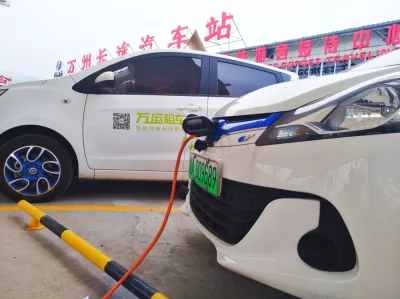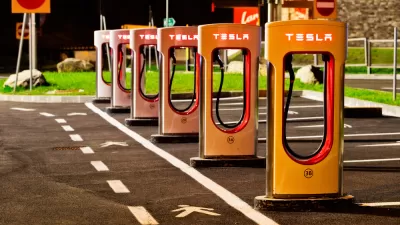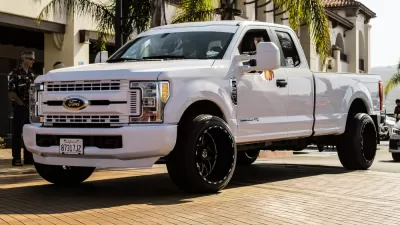Two new reports on the outlook of electric vehicles paint a bright future for the new technology. No country is more critical than China, where policies will force global auto companies to invest in clean technology if they want to have a future.

"By 2040, more than half of all new car sales and a third of the planet’s automobile fleet -- equal to 559 million vehicles -- will be electric, according to a global outlook published Monday [May 21] by Bloomberg New Energy Finance," states Bloomberg News.
“China will continue to be the pivotal factor that drives the fast popularization of electric vehicles globally,’’ said Nannan Kou, a senior associate at BNEF in Beijing and an author of the forecast. “China’s EV policies are reshaping the corporate strategies of global carmakers such as Toyota and helping its battery makers get into the supply chain for global automakers.’’ [More on China EV market in second report below].
Electric Vehicle (EV) sales in the U.S. are not necessarily representative of what is happening elsewhere. The article suggests that could change soon.
The U.S. has been relatively slow to embrace the shift as battery-powered vehicles comprised just 1.1 percent of new car sales last year [compared to 3.3.percent in China]. That’s poised for change after automakers announced at least 60 more EV models for release between now and 2022, with GM and Volkswagen promising the most.
American consumers, who could choose from 38 battery-powered models at the end of last year, could select from 100 by the end of 2022. Increased choice will help more than double EV sales to 853,000 by 2022, equal to about 5 percent of U.S. light-vehicle sales.
Europe is poised to replace the United States as "the No. 2 EV market as last year’s sales could more than triple to 860,000 by 2022, representing 5 percent of all new car sales," according to Bloomberg. EV sales "are driven by national subsidies, tightening fuel-economy regulations, more models and increasing concerns about urban air quality."
A major aspect of this year's report, "Electric Vehicle Outlook 2018," deals with the outlook for electric buses, the topic of an earlier post, "Report: Bus Transit 80% Electric by 2040."
The second report, "Global EV Outlook 2018," is from the Paris-based International Energy Association (IEA), an organization historically associated with energy security, requiring its energy-consuming member countries to have "crude oil and/or product reserves equivalent to 90 days of the previous year’s net imports." More recently it has made a priority of promoting environmental awareness.
"Electric vehicle (EV) ownership will balloon [from 3.1 million last year] to about 125 million by 2030, spurred by policies that encourage drivers, fleets and municipalities to purchase clean-running cars, the policy advisor to energy-consuming nations forecast on Wednesday," reports Tom DiChristopher, who covers energy for CNBC.com, on May 30.
However, the IEA also sees a pathway to 220 million electric vehicles by 2030, provided the world takes a more aggressive approach to fighting climate change and cutting emissions than currently planned.
While battery costs are falling, the IEA acknowledges that government policy remains critical to making EVs attractive to drivers, spurring investment and helping carmakers achieve economies of scale.
"China remained by far the largest electric car market in the world, accounting for half sold last year," states the May 30 press release for the report.
Nearly 580,000 electric cars were sold in China in 2017, a 72% increase from the previous year. The United States had the second-highest, with about 280,000 cars sold in 2017, up [75%] from 160,000 in 2016.
Nordic countries remain leaders in market share, according to IEA.
Electric cars accounted for 39% of new car sales in Norway, making it the world leader in electric vehicle (EV) market share. In Iceland, new EV sales were 12% of the total while the share reached 6% in Sweden.
"As for the United States, the IEA sees electric vehicle deployment growing at two speeds," adds DiChristopher.
While it sees "rapid market penetration" in places like California and other states with zero emissions plans, relatively low taxes on fuels and the Trump administration's intentions to scale back vehicle emissions standards could hold back growth.
-
July 17, 2017A new report from Bloomberg New Energy Finance predicts that due to a plunge in battery prices and improvement in battery technology, electric vehicles will be cost-competitive with gasoline vehicles in eight years. By 2040, they will outsell them.
FULL STORY: Electric vehicles will grow from 3 million to 125 million by 2030, International Energy Agency forecasts

Montreal Mall to Become 6,000 Housing Units
Place Versailles will be transformed into a mixed-use complex over the next 25 years.

Planetizen Federal Action Tracker
A weekly monitor of how Trump’s orders and actions are impacting planners and planning in America.

DARTSpace Platform Streamlines Dallas TOD Application Process
The Dallas transit agency hopes a shorter permitting timeline will boost transit-oriented development around rail stations.

Study: 4% of Truckers Lack a Valid Commercial License
Over 56% of inspected trucks had other violations.

Chicago Judge Orders Thousands of Accessible Ped Signals
Only 3% of the city's crossing signals are currently accessible to blind pedestrians.

Philadelphia Swaps Car Lanes for Bikeways in Unanimous Vote
The project will transform one of the handful of streets responsible for 80% of the city’s major crashes.
Urban Design for Planners 1: Software Tools
This six-course series explores essential urban design concepts using open source software and equips planners with the tools they need to participate fully in the urban design process.
Planning for Universal Design
Learn the tools for implementing Universal Design in planning regulations.
City of Mt Shasta
City of Camden Redevelopment Agency
City of Astoria
Transportation Research & Education Center (TREC) at Portland State University
US High Speed Rail Association
City of Camden Redevelopment Agency
Municipality of Princeton (NJ)





























